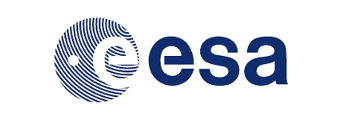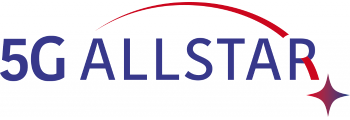QuaDRiGa, short for QUAsi Deterministic RadIo channel GenerAtor, is used for generating realistic radio channel impulse responses for system-level simulations of mobile radio networks. These simulations are used to determine the performance of new digital-radio technologies in order to provide an objective indicator for the standardization process in bodies like the third generation partnership program 3GPP.
QuaDRiGa was developed at Fraunhofer HHI to enable the modeling of MIMO radio channels for specific network configurations, such as indoor, satellite or heterogeneous configurations. Besides being a fully-fledged three dimensional geometry-based stochastic channel model, QuaDRiGa contains a collection of features created in SCM(e) and WINNER channel models along with novel modeling approaches which provide features to enable quasi-deterministic multi-link tracking of users (receiver) movements in changing environments.
QuaDRiGa contains a couple of new features and is furthermore calibrated against 3GPP channel models like 3GPP-3D and the latest New Radio channel model. The supported (standardized) channel models are:
Added features in version 2.8:
Added features in version 2.6:
Added features in version 2.4:
Added features in version 2.2:
Features of version 2.0:
Features of version 1.4:
Quadriga Version: 2.8.1
QuaDRiGa is free software: you can redistribute it and/or modify it under the terms of the Software License for The QuaDRiGa Channel Model. The details can be seen below. Please free to contact us for technical requests under: QuaDRiGa team.
Former versions:
| Version | Release Date | Notes |
| 2.8.1 | 13.12.2023 | Site specific simulations |
| 2.6.1 | 12.07.2021 | Octave 6.2 compatibility, Semi-deterministic clusters, Performance improvements |
| 2.4.0 | 03.11.2020 | Added support for Satellite channel models, 3GPP CDL and TDL models, 3GPP InF models |
| 2.2.0 | 27.06.2019 | Added support for dual-mobility, vehicular and industrial scenarios |
| 2.0.0 | 01.08.2017 | Supports 3GPP 38.901 channel model (including spatial consistency and multi-frequency simulations) and final mmMAGIC channel model. |
| 1.4.8 | 05.09.2016 | Bug Fixes |
| 1.4.1 | 22.03.2016 | Supports 3GPP-3D (3GPP TR 36.873) simulations and initial mm-wave channels up to 80 GHz. |
| 1.2.32 | 23.03.2015 | |
| 1.2.3 | 30.04.2014 | |
| 1.0.7 | 20.06.2013 |
© Copyright 2011 - 2020 Fraunhofer-Gesellschaft zur Förderung der angewandten Forschung e.V., All rights reserved.
The Quadriga Channel Model ("QuaDRiGa") is used for generating realistic radio channel impulse responses for system-level simulations of mobile radio networks. These simulations are used to determine the performance of new technologies in order to provide an objective indicator for the standardization process in bodies like the third generation partnership program 3GPP.
Quadriga was developed at Fraunhofer HHI to enable the modeling of MIMO radio channels for specific network configurations, such as indoor, satellite or heterogeneous configurations. Besides being a fully-fledged three dimensional geometry-based stochastic channel model, QuaDRiGa contains a collection of features created in SCM(e) and WINNER channel models along with novel modeling approaches which provide features to enable quasi-deterministic multi-link tracking of users (receiver) movements in changing environments.
Redistribution and use of QuaDRiGa in source, with or without modification, are permitted without payment of copyright license fees provided that you satisfy the following conditions:
a. Use QuaDRiGa only for non-commercial purposes. Non-commercial usage in the context of this license is especially the use of QuaDRiGa for scientific, education or standardization purposes.
b. You must retain the complete text of this software license in redistributions of QuaDRiGa or your modifications thereto in source code form.
c. You must make available free of charge copies of the complete source code of the QuaDRiGa and your modifications thereto to recipients of copies in binary form. The name of Fraunhofer may not be used to endorse or promote products derived from this library without prior written permission.
d. You may not charge copyright license fees for anyone to use, copy or distribute the QuaDRiGa software or your modifications thereto.
e. Your modified versions of the QuaDRiGa must carry prominent notices stating that you changed the software and the date of any change. For modified versions of the QuaDRiGa, the term "Fraunhofer QuaDRiGa" must be replaced by the term "Third-Party Modified Version of the Fraunhofer QuaDRiGa.".
You may add your own copyright statement to your modifications and may provide additional or different license terms and conditions for use, reproduction, or distribution of your modifications, or for any such Derivative Works as a whole, provided your use, reproduction, and distribution of the Work otherwise complies with the conditions stated in this License.
NO EXPRESS OR IMPLIED LICENSES TO ANY PATENT CLAIMS, including without limitation the patents of Fraunhofer, ARE GRANTED BY THIS SOFTWARE LICENSE. Fraunhofer provides no warranty of patent non-infringement with respect to this software. You may use Qaudriga or modifications thereto only for purposes that are authorized by appropriate patent licenses.
This Quadriga software is provided by Fraunhofer on behalf of the copyright holders and contributors "AS IS" and WITHOUT ANY EXPRESS OR IMPLIED WARRANTIES, including but not limited to the implied warranties of merchantability and fitness for a particular purpose. IN NO EVENT SHALL THE COPYRIGHT HOLDER OR CONTRIBUTORS BE LIABLE for any direct, indirect, incidental, special, exemplary, or consequential damages, including but not limited to procurement of substitute goods or services; loss of use, data, or profits, or business interruption, however caused and on any theory of liability, whether in contract, strict liability, or tort (including negligence), arising in any way out of the use of this software, even if advised of the possibility of such damage.
The technical documentation gives a detailed overview of the QuaDRiGa channel model, its implementation details and tutorials providing examples for usage. The model has been evolved from the WINNER channel model described in WINNER II deliverable D1.1.2 v.1.2. This document covers only the model itself. Measurement campaigns covering the extraction of suitable parameters can be found in the WINNER documentation. Furthermore, the MIMOSA project covers the model development and parameter extraction for land-mobile satellite channels.
The channel model is parametrized for various applications and scenarios, e.g. urban macrocellular (UMa) or urban microcellular (UMi). The model parameters for these scenarios are either based on measurement campaigns or on standardized models. While a multitude of common configuration files comes with the QuaDRiGa implementation, additional parameterizations based on single measurement campaigns are available here.
| Download | Description |
| BERLIN UMi Campus LOS | Urban micro campus LOS Konfiguration according to measurements conducted at 3.675 GHz in Berlin, Germany. |
| BERLIN UMi Campus NLOS | Urban micro campus NLOS configuration according to measurements conducted at 3.675 GHz in Berlin, Germany. |
| BERLIN UMi Square LOS | Urban micro open-square LOS configuration according to measurements conducted at 3.675 GHz in Berlin, Germany. |
| BERLIN UMi Square NLOS | Urban micro open-square NLOS configuration according to measurements conducted at 3.675 GHz in Berlin, Germany. |
Please note:
Please change the file extension .txt to .conf after downloading
| Title | Link |
| Jaeckel, S.; Raschkowski, L.; Burkhardt, F. & Thiele, L.; "Efficient Sum-of-Sinusoids based Spatial Consistency for the 3GPP New-Radio Channel Model", Proc. IEEE Globecom Workshops '18, 2018. | IEEExplore Digital Library |
| Jaeckel, S.; Raschkowski, L.; Wu, S.; Thiele, L. & Keusgen, W.; "An Explicit Ground Reflection Model for mm-Wave Channels", Proc. IEEE WCNC Workshops '17, 2017. | IEEExplore Digital Library |
| S. Jaeckel, "Quasi-deterministic channel modeling and experimental validation in cooperative and massive MIMO deployment topologies", PhD thesis, Technische Universität Ilmenau, 2017. | Digitale Bibliothek Thüringen (open access) |
| F. Burkhardt, E. Eberlein, S. Jaeckel, G. Sommerkorn and R. Prieto-Cerdeira, "MIMOSA–a dual approach to detailed land mobile satellite channel modeling", International Journal of Satellite Communications and Networking, 2014. | Wiley Online Library |
| K. Börner, J. Dommel, S. Jaeckel and L. Thiele, "On The Requirements for Quasi-Deterministic Radio Channel Models for Heterogeneous Networks", 2012 International Symposium on Signals, Systems and Electronics (ISSSE), pp.1-5, 3-5 Oct. 2012. | IEEExplore Digital Library |
| S. Jaeckel, K. Börner, L. Thiele and V. Jungnickel, "A Geometric Polarization Rotation Model for the 3D Spatial Channel Model", IEEE Transactions on Antennas and Propagation, vol.60, no.12, pp.5966-5977, Dec. 2012. | IEEExplore Digital Library |
| S. Jaeckel, L. Raschkowski, K. Börner and L. Thiele, "QuaDRiGa: A 3-D Multicell Channel Model with Time Evolution for Enabling Virtual Field Trials", IEEE Transactions on Antennas Propagation, 2014. | IEEExplore Digital Library (open access) |
| F. Burkhardt, E. Eberlein, S. Jaeckel, G. Sommerkorn and R. Prieto-Cerdeira, "QuaDRiGa: a MIMO Channel Model for Land Mobile Satellite", 2014 8th European Conference on Antennas and Propagation (EuCAP), 2014. | IEEExplore Digital Library |
This work is supported by:

European Space Research and Technology Centre (ESTEC) under contract AO/1-5985/09/08/NL/LvH (Acronym: MIMOSA) | 01.06.10 – 18.12.13

Federal Ministry for Economic Affairs and Energy (BMWi) in the national collaborative project ComGreen under contract 01ME11010. | 01.01.11 – 31.07.14

Federal Ministry for Economic Affairs and Energy (BMWi) in the national collaborative project IntelliSpektrum under contract 01ME11024. | 01.04.11 – 30.09.14

European Commission co-funded the project METIS as an Integrated Project under the Seventh Framework Programme for research and development (FP7) | 01.11.12 – 30.04.15

GreenTouch within the funded project “LSAS Channel Modelling” | 01.10.13 – 31.03.15

European Commission funded project 5G PPP mmMAGIC (Millimetre-Wave Based Mobile Radio Access Network for Fifth Generation Integrated Communications) | 01.07.15 – 30.06.17

Celtic-Plus project Reicovair, sponsered by Federal Ministry of Education and Research (BMBF). | 01.01.16 – 31.12.18

The 5G-ALLSTAR project receives funding from the European Union Horizon 2020 EU-Korea programme under grant n. 815323 and is supported by the Institute for Information & communications Technology Promotion (IITP) grant funded by the Korea government (MSIT No. 2018-0-00175, 5G AgiLe and fLexible integration of SaTellite And cellulaR)| 01.07.18 – 30.06.21

Federal Ministry of Education and Research (BMBF) in the national collaborative project PräKIpio | 01.04.20 – 31.03.2022
Hereinafter we inform you about the nature, scope and purpose of the processing of your personal data when using our website at „http://quadriga-channel-model.de/“. Personal data is any information that relates to an identified or identifiable natural person.
The person responsible (“Controller”) within the meaning of the EU General Data Protection Regulation (GDPR) is the natural or legal person which, alone or jointly with others, determines the purposes and means of the processing of personal data. Controller within the meaning of the GDPR for the personal data processed when visiting our website is Fraunhofer Institute for Telecommunications Heinrich Hertz Institute, Einsteinufer 37, 10587 Berlin, phone +49 30 31002-0, e-mail (hereinafter “we”).
We have designated Fraunhofer Institute for Telecommunications Heinrich Hertz Institute Einsteinufer 37 10587 Berlin Germany Phone: +49 30 31002-0 as our Data Protection Officer.
When you visit our website, our server collects the following information from your device: browser type and version, operating system used, the previously visited web page, IP address, and time of the page view.
We collect and process this data in order to ensure the trouble-free operation of our website and to detect, fend off and prosecute a misuse of our services. Furthermore, we use the collected data for statistical purposes to evaluate, for example, by which devices and browsers our website is accessed in order to improve and adapt our offer to our customers’ needs on an ongoing basis. This data processing is based on Article 6 par. 1 f GDPR.
We will delete the aforementioned data no later than twelve months after they have been collected.
For the technical operation of our website on the Internet, we use the services of Kontent (Kontent GmbH, 47228 Duisburg) as Processor according to Article 28 GDPR
Furthermore, we use services of Piwik / Mamoto for processing data according to Article 28 GDPR.
If you send us a message via the contact form on our website, we will process the data input in the form fields, in particular your name, your e-mail address and your message.
If you send us a message by e-mail, we will save your message along with its sender details included (your name, e-mail address, and any additional information added by your e-mail client or the transferring servers). For reception, storage and sending of e-mails, we use an e-mail provider who acts for us as a processor in accordance with Article 28 GDPR.
This data processing is based on our legitimate interest to answer your request and handle possible follow-up requests from you (Article 6 par. 1 f GDPR). We will erase the information collected from your message no later than twelve months after the last communication with you on your request, subject to the provision in the following paragraph.
If you send us a message legally relevant for a contractual relationship with us, the legal basis for the processing is Article 6 par. 1 b GDPR, regardless of how you transmitted your message to us. In such a case, we will erase the data related to your message as soon as all mutual claims arising from the contractual relationship have been completely settled and the commercial and fiscal retention periods have expired.
If you have subscribed to our newsletter, we will keep you informed about news from us by e-mail (direct advertising from and about us). You will not receive more than one newsletter a week. You can object to the use of your e-mail address for advertising purposes at any time in any form, without incurring any costs other than transmission costs at the basic rate.
This data processing is based on your consent in accordance with Article 6 par. 1 a GDPR. If you revoke your consent to the use of your e-mail address for advertising purposes, we will delete your e-mail address from our mailing list.
When you leave a comment on our website, we will publish your contribution on our website together with your username, for which you may specify a pseudonym. To counteract misuse of our offer, we store the IP address of the device you are writing from for a period of twelve months (Article 6 par. 1 f GDPR). We reserve the right to delete any unsuitable or thematically inappropriate posts at any time. In addition, we delete published contributions at the request of the respective author.
When you visit our website, we place a “cookie” on your device. This is a small text file that we use to recognize your device when you return to our website for a later visit. With the help of the cookie we can also analyze certain user behavior, for example, which parts of our website you use, how long you stay on our site and when and how often you return to our site. We will delete a cookie no later than twelve months after your last visit to our website.
This data processing is carried out on the basis of our legitimate interest to better tailor our online presence to our visitors’ interests and the technology used by them (device and browser types), to analyse and optimise our website’s functions and the efficiency of advertising measures (legal basis: Article 6 par. 1 f GDPR).
You can prevent the placing of cookies by going to the cookie settings of your Internet browser and switching off the use of cookies for our site or for all websites. In your browser settings, you can also delete cookies already stored.
We use Google Analytics, a web analytics service of Google LLC, 1600 Amphitheater Parkway, Mountain View, CA 94043, USA (hereafter “Google”). Google places a cookie on your device. With this cookie, Google can collect information about how you use our website. This information is transmitted to a server in the US, where it is evaluated by Google and made available to us. The legal basis is Article 6 par. 1 f GDPR, namely our legitimate interest in the evaluation and optimization of our website.
Google has committed itself under the EU-US Privacy Shield Agreement to comply with the European Union’s data protection regulation.
We use Google Analytics with activated IP anonymization. This means that your IP address will usually be shortened within the scope of the GDPR so that the IP can no longer be traced back to you. Only in exceptional cases will the full IP address be sent to a Google server in the US and shortened there. The IP address provided by your browser will not be merged with other data provided by Google. You may prevent the use of cookies by selecting the appropriate settings on your browser.
Our website uses fonts provided by Google LLC, 1600 Amphitheatre Parkway, Mountain View, CA 94043, USA (hereinafter “Google”) as “Google Fonts”. Google Fonts are downloaded directly from Google when you access our website from your device. Google hereby receives your IP address, your operating system, your browser type and its version. This information is transferred to a server in the USA where it is evaluated by Google for its own business purposes. Google has committed itself under the EU-US Privacy Shield Agreement to comply with the European Union’s data protection laws.
With regard to your personal data we process, you have the following rights:
You have the right to obtain a confirmation from us as to whether we process personal data concerning you. If this is the case, we will inform you about the personal data stored about you and the further information in accordance with Article 15 par. 1 and 2 GDPR.
You have the right to have your inaccurate personal data rectified without undue delay. Taking into account the purposes of processing, you also have the right to request the completion of incomplete personal data, including by means of providing a supplementary statement.
You can demand the erasure of your personal data concerning you under the conditions of Article 17 par. 1 GDPR without undue delay, as far as their processing is not necessary according to Article 17 par. 3 GDPR.
You may demand that we restrict the processing of your data if one of the requirements of Article 18 par. 1 GDPR applies. In particular, you can request the restriction instead of an erasure.
We will communicate any rectification or erasure of your personal data and a restriction of processing to all recipients to whom we have disclosed your personal data, unless this proves impossible or involves a disproportionate effort. We will also inform you about these recipients if you request it.
You have the right to receive the personal data which you provide to us in a structured, commonly used and machine-readable format. You may also request that we transmit the data to another controller without hindrance, where technically feasible.
As far as a data processing is based on your given consent, you have the right to, withdraw your consent at any time. The withdrawal of consent shall not affect the lawfulness of the data processing based on consent before its withdrawal.
RIGHT TO OBJECT: ON GROUNDS RELATING TO YOUR PARTICULAR SITUATION, YOU MAY, AT ANY TIME, OBJECT TO PROCESSING OF YOUR PERSONAL DATA; this right applies to a processing, according to Article 6 par. 1 f DPRG, necessary for the purposes of the legitimate interests pursued by us or by a third party, except where such interests are overridden by your interests or fundamental rights and freedoms of the data subject which require protection of personal data, in particular where the data subject is a child. If you exercise your right to object, we will no longer process the personal data in question unless we can demonstrate compelling legitimate grounds for processing that override the interests, rights and freedoms of you, or for the establishment, exercise or defense of legal claims.
IN CASE WE PROCESS PERSONAL DATA FOR DIRECT MARKETING PURPOSES (E.G. NEWSLETTER), YOU MAY, AT ANY TIME, OBJECT TO PROCESSING OF YOUR PERSONAL DATA FOR THE PURPOSE OF SUCH ADVERTISING, WITH THE RESULT THAT WE WILL NO LONGER PROCESS YOUR DATA FOR THESE PURPOSES.
If you believe that the processing of your personal data is in breach of the GDPR, you may lodge a complaint with a supervisory authority, in particular in the Member State of your habitual residence, place of work or place of the alleged infringement. This does not exclude other administrative or judicial remedies.